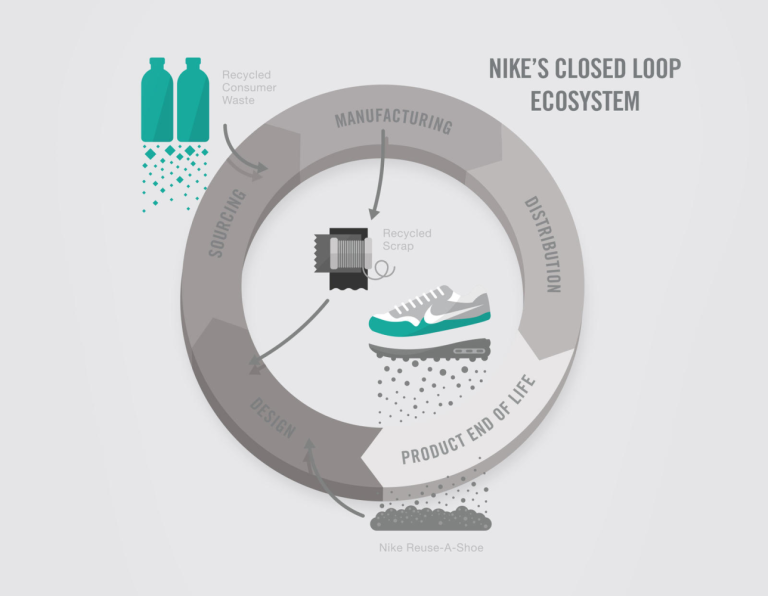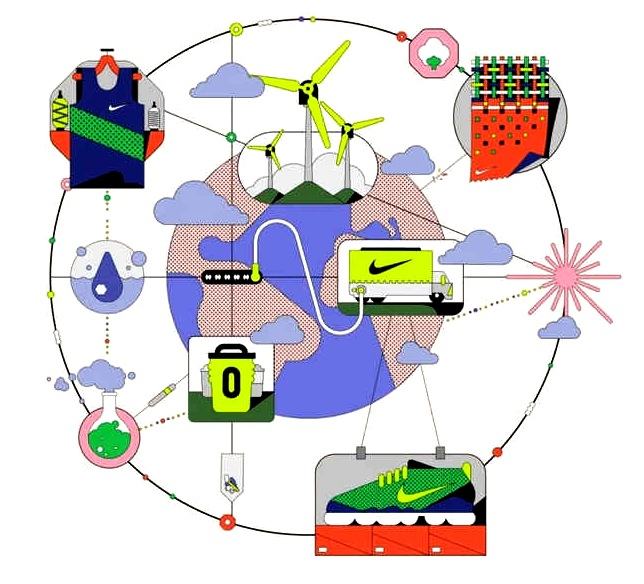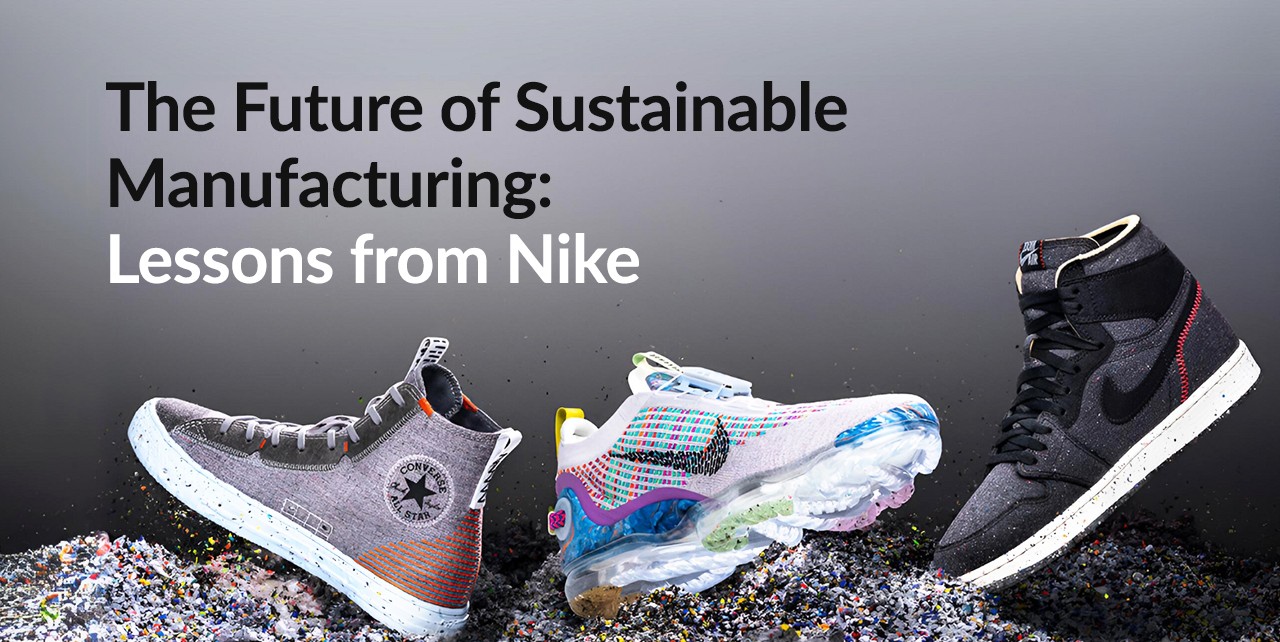Nike, as one of the most prominent names in athletic footwear and apparel, has long been at the leading of industry trends. However, its journey has not been without any challenges, particularly regarding environmental circumstances. Previously , Nike’s manufacturing processes were crucially affected by environmental issues. The production of shoes and other consumer materials involved extensive use of synthetic materials and chemicals, which posed risks to both ecosystems and human health. Additionally, the manufacturing processes were associated with high levels of carbon emissions, impacting global climate change.

The Shift Towards Sustainability
In response to environmental challenges, Nike started a comprehensive strategy to transform its sustainability approach. Recognizing the need for innovation and a shift in focus, the company aligned its operations with environmental stewardship.
One key milestone in this transformation is Nike’s commitment to using recycled materials. The company has made significant strides by incorporating recycled polyester into its products. To date, Nike has repurposed the equivalent of 5 billion plastic bottles into high-performance athletic wear. This initiative not only reduces waste but also decreases the demand for virgin polyester, which is derived from non-renewable petroleum sources.
Additionally, Nike introduced its “Move to Zero” campaign, which aims to achieve zero carbon and zero waste across its global operations. This broader commitment includes:
Improving Supply Chain Efficiency: Enhancing the efficiency of production and distribution processes.
Investing in Renewable Energy: Transitioning to renewable energy sources for its facilities.
Adopting Sustainable Materials: Integrating more sustainable materials and processes throughout the supply chain.
These efforts reflect Nike’s dedication to reducing the environmental impact of its products and practices, setting a high standard for the industry.

Challenges and Solutions
Nike’s commitment to sustainability is demonstrated through its innovative use of materials. Here’s a look at some of the key advancements:
Recycled Polyester
Initiative: Nike has incorporated recycled polyester into its products, significantly repurposing plastic waste.
Impact: To date, Nike has used the equivalent of 5 billion plastic bottles, reducing both waste and the need for virgin polyester, which comes from non-renewable petroleum sources.
Organic Cotton
Usage: Nike utilizes organic cotton in various products, which minimizes the use of harmful chemicals.
Benefits: Organic cotton farming practices reduce environmental impact by avoiding synthetic pesticides and fertilizers.
Sustainable Rubber
Implementation: Nike sources rubber from sustainable practices.
Advantages: This approach helps reduce environmental damage and promotes more responsible material sourcing.
Environmentally Friendly Dyes
Application: Nike uses dyes that are less harmful to the environment.
Effect: These dyes reduce the chemical load in the manufacturing process and improve the overall sustainability of the products.
Nike Air Soles
Redesign: The cushioning technology in Nike Air soles has been updated to incorporate recycled materials.
Outcome: This innovation further minimizes the environmental impact of Nike’s product range.
Flyleather
Material: Flyleather is made from at least 50% recycled natural leather fiber.
Advantages:
- Waste Reduction: Significantly cuts down on leather waste.
- Lower Carbon Footprint: Compared to traditional leather, Flyleather has a reduced environmental impact.
By continually seeking and adopting these sustainable materials, Nike is setting a high standard for the industry and demonstrating its dedication to environmental responsibility.

Reducing Carbon Footprint
Nike is working to reduce its carbon output in a number of ways. The company has committed to powering all of its global facilities with 100% renewable energy. This transition to renewable energy sources, such as wind and solar power, is a significant step in reducing the company’s overall carbon emissions.
In addition to renewable energy, Nike has invested in technologies that improve the efficiency of its manufacturing processes. For example, the company has implemented advanced cutting techniques that reduce fabric waste, and it continues to explore new methods to minimize environmental impact throughout its supply chain.
Nike’s approach to reducing carbon emissions also extends to transportation and logistics. The company is working to optimize its transportation networks to reduce emissions associated with shipping and distribution. This includes using more efficient modes of transportation and exploring innovative solutions to further decrease the environmental impact of its logistics operations.
Community and Industry Impact
Nike’s sustainability efforts have also had a ripple effect throughout the industry and communities. The company’s commitment to sustainable practices has set a benchmark for other brands to follow, encouraging industry-wide shifts towards more environmentally friendly practices. Nike’s leadership in sustainability is not only about improving its own operations but also about inspiring and influencing others to adopt similar practices.
Furthermore, Nike has engaged in various community initiatives to promote environmental awareness and sustainability. The company partners with organizations and programs that focus on environmental education and conservation, reinforcing its commitment to creating a positive impact beyond its own operations.
Nike’s journey towards sustainability highlights the power of innovation and commitment in addressing environmental challenges. From overcoming manufacturing issues to embracing recycled materials and setting ambitious carbon reduction goals, Nike is leading by example. The company’s efforts reflect a profound shift towards a more sustainable future in the athletic apparel industry.
By continually pushing the boundaries of sustainability, Nike demonstrates that environmental responsibility can be integrated into every aspect of business operations. Their ongoing efforts to reduce waste, minimize carbon emissions, and utilize sustainable materials set a high standard for others to follow.
To learn more about such success stories and how to drive your organization towards a better future with sustainable approaches, check our courses here.


